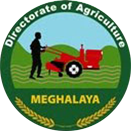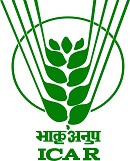Success Stories
- Publication
- News Letter
- On farm Trials
- Front Line Demonstration
- Major Farming System
- Priority Thrust Area
- Other Extension Activities
- Success Stories
- Success stories of KVK from ICAR-ATARI (Zone-III)
- Proforma Annual Report for the Year 2021
- Proforma Annual Report for the Year 2019-2020
- Proforma Annual Report for the Year 2018-2019
- Proforma Annual Report for the Year 2015-2016
Related Links
- Meghalaya Agriculture Portal
- ICAR Zone III Portal
- Indian Council of Agriculture Research
- Meghalaya Marketing Portal
- Meghalaya Portal
- KVK Ribhoi
- KVK West Khasi Hills
- KVK West Garo Hills
Last Updated on 11-02-2020
What is On-Farm Testing?
On-farm testing (OFT) is not researcher-managed small plots on farms. It also in not, single-strip, split-field or field-to-field comparisons of something new with the current farming practices. On-farm testing as we define it, is replicated, scientifically-valid research with field trials established and managed by the growers with field-scale equipment. Properly designed, grower on-farm tests can separate the effects of natural field variability from the effects of treatments being compared, and can provide an accurate basis for grower management decisions.
Why Do Growers Need "Scientific" Field Trials?
The need for scientific experimental designs in grower field trials may not be readily apparent. Growers are usually very adept at observing how a new practice or management options performs and making decisions based on their farming experience. If they weren't right much of the time, they probably wouldn't in business today.
Growers have been exploring new farming methods for thousands of years, but only recently has a substantial effort been made to bring the principles of modern scientific methods to their aid. Growers have often evaluated a new practice by applying it to a small field and comparing the results with nearby fields, or by splitting a field and applying the new practice on one side and their normal practice on the other. Likewise, growers and industry reps sometimes place a strip of a new herbicide, fertilizer, or other production option in a field to compare it with the rest of the field. These are called "demonstrations" and they allow a local comparison of how a practice "looks." It can be an important first step. The problem comes when you want more than a "look." It is simply not possible to make reliable comparisons of yields and other "quantitative" data without a scientific approach.
Growers have expressed concern about adopting equipment and technologies that have not been tested in their agriclimatic conditions and cropping systems. Cropland areas contain highly variable soils, topography, climatic conditions, and cropping systems, making testing and transfer of new farming technologies especially difficult. In this variable cropland, and even in "uniform" areas, design of OFTs is a critical first step in accurate field comparison of management options.








